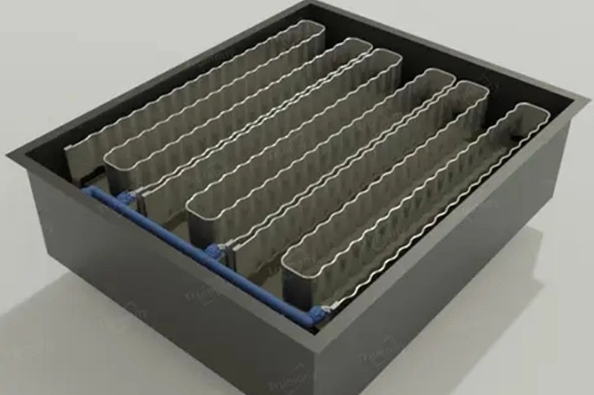At the core of a liquid cooling battery pack lies a carefully engineered thermal management system. This system is designed to regulate the temperature of the battery cells, ensuring they operate within an optimal temperature range.
1. Coolant Circulation
A liquid coolant, often a mixture of water and glycol (similar to automotive antifreeze) or other specialized fluids, is circulated through a network of channels or pipes integrated within the battery pack. These channels are strategically placed in close proximity to the battery cells. The coolant is pumped through these channels by a dedicated coolant pump. This pump is typically electrically powered and controlled by the battery management system (BMS). The BMS monitors various parameters of the battery, including temperature, and adjusts the pump speed to regulate the flow rate of the coolant based on the heat load.
2. Heat Absorption
As the battery cells discharge or charge, a chemical reaction occurs, which generates heat. The liquid coolant flowing through the channels adjacent to the cells absorbs this heat. The coolant has a high specific heat capacity, meaning it can absorb a large amount of heat without a significant increase in its own temperature. The heat transfer from the battery cells to the coolant occurs through conduction. The close contact between the cells and the coolant-filled channels allows for efficient heat transfer.
3. Heat Exchangers
Once the coolant has absorbed the heat from the battery cells, it needs to release this heat to the external environment. This is where heat exchangers come into play. There are two main types of heat exchangers used in liquid cooling battery packs: air-cooled heat exchangers and liquid-to-liquid heat exchangers.
· In an air-cooled heat exchanger, the hot coolant flows through a series of fins or tubes. A fan blows air over these fins or tubes, and the heat from the coolant is transferred to the air. This cools down the coolant, which can then be recirculated back to the battery pack to absorb more heat.
· Liquid-to-liquid heat exchangers, on the other hand, use a secondary coolant loop. The hot coolant from the battery pack is passed through a heat exchanger where it transfers its heat to a secondary coolant. This secondary coolant is often connected to other cooling systems in the vehicle, such as the air-conditioning system or the engine cooling system (in hybrid vehicles). The secondary coolant then dissipates the heat to the environment through its own heat exchange process.
4. Temperature Monitoring and Control
The battery management system plays a crucial role in the overall operation of the liquid cooling battery pack. It constantly monitors the temperature of the battery cells at multiple points within the battery pack. If the temperature of any cell or group of cells exceeds the optimal range, the BMS can take several actions:
· Increase the speed of the coolant pump to boost the flow rate of the coolant, ensuring more heat is absorbed.
· Adjust the operation of the heat exchanger, such as increasing the fan speed in an air-cooled heat exchanger or adjusting the flow rate of the secondary coolant in a liquid-to-liquid heat exchanger.
· Limit the charge or discharge rate of the battery to reduce heat generation if the temperature cannot be effectively controlled otherwise.
Summary
The liquid cooling battery pack’s working principle is a well-coordinated process of coolant circulation, heat absorption, heat dissipation through heat exchangers, and precise temperature monitoring and control by the battery management system. This ensures the safe and efficient operation of the battery pack, extending its lifespan and maintaining its performance.

